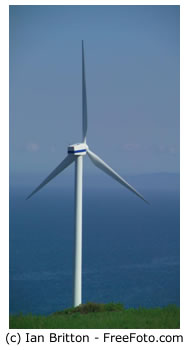Data Centres and Renewable Energy Project


Conclusions

The North of Scotland is a good place for data centres because:
- High speed fibre optic networks exist in Shetland, Orkney, and the E coast from Thurso to Banff
- It is a physically, politically and socially secure region
- There is a competitive labour market and an existing relevant skills base
- It supports very energy efficient data centres - free cooling all year
- Plentiful supplies of renewable energy exist
It is economically feasible to power a small data centre with renewables:
Operating in N Scotland, the benefits relative to an averagely efficient data centre of the same size on grid in SE England are:
- Energy saving: 716MWh
- Cost saving: £230-£270k per year
- CO2 saving: 1400 tonnes per year for hydroelectricity
- 8100 tonnes per year for wind & biogas
See attached spreadsheet for calculations and assumptions
When tidal current technology becomes more robust and commercial, this will allow larger scale facilities to be sited in the region.
Wind will only be useable in conjunction with grid electricity and possibly a small amount of hydrogen storage to cover peak loading stress. This is an area for further study.
Suggested areas of study
Wind and biogas is the lowest overall cost option for building and operating a data centre, but it is limited by the availability of organic wastes. It would be worth studying this option in more depth to determine how far this could be scaled up, and also to look at whether use of grid electricity could extend the scalability.
Investigating an option to use wind and the grid but with a small backup hydrogen store to cover peak loading periods. This would require looking at the supply/demand balance for a wider community, domestic and industrial.
Further work on comparing the effectiveness and economics of storage for data centre applications would be useful. Specific areas to look at include: Fast charge time batteries; compressed air at medium scale; Flow batteries.

References used in this page:
(1) http://www.anaerobic-digestion.com/html/how-to-calculate-greenhouse-ga.php, accessed 28 April 2010.